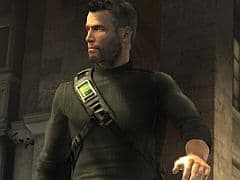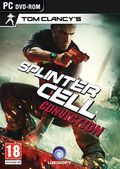You can trust VideoGamer. Our team of gaming experts spend hours testing and reviewing the latest games, to ensure you're reading the most comprehensive guide possible. Rest assured, all imagery and advice is unique and original. Check out how we test and review games here
I’ve always had a bit of a love-hate relationship with stealth games. Few other genres offer such a contrasting mix of pure buttery thrills and agonising, teeth-gnashing frustration. You see, I can‘t get enough of the good bits – the silent kills, the skulking about in the shadows, the crawling on your belly behind cover as a witless guard passes by. On the other hand, I can’t stand those bits where everyone seems to have eyes in the back of their head, where the slightest mistake will send you waaaay back to a distant checkpoint. When this happens for the fifth time in ten minutes – that’s when I reach for my revolver. As it so happens, this is one of the many reasons why I love IO Interactive’s Hitman Series – because those games, you really can reach for your revolver and blow everyone away.
With Splinter Cell: Conviction, Ubisoft is employing a sneaky trick with its approach to stealth-based gameplay: it’s thrown in a co-op mode. Fine, so the franchise previously touched on buddy-buddy sneaking with 2006’s Double Agent – but co-op play was only available on the Xbox and PS2 versions of the game. Conviction’s multiplayer represents the first attempt since then to give us a narrative-led, two-player spin on the usual Sam Fisher shtick. As it so happens, neither you nor your co-op chum will be taking control of Fisher himself. Here in multiplayer, the limelight is shared by two new characters: a Third Echelon operative named Archer, and a Russian codenamed Kestrel – an agent from the Voron intelligence agency.
The main course on Conviction’s multiplayer menu will be what appears to be a surprisingly meaty co-op campaign that acts as a prologue to Fisher’s single player adventures. The plot concerns the sudden disappearance of four powerful Russian EMP devices, with Archer and Kestrel rushing to find the weapons before they are sold on the Black Market. Under these circumstances some people might opt to just sit on eBay for a week, but the two agents take a more hands-on approach – sneaking and snuffing their way through four missions. The prologue campaign should last between four to six hours, depending on which of the three difficulty levels you play on, and it’ll supposedly carry the story right up to the start of Sam’s tragic tale – the one where he deals with the trauma of losing his daughter…. by beating people up in toilets.
Alongside the story-driven co-op missions, there will also be four other modes to sample. There’s “Hunter”, which finds you and a chum silently killing a pre-set number of enemies; “Last Stand”, which sounds like it will take after Gears’ Horde Mode, and force you to defend an EMP from incoming waves of foes; and “Infiltration”, which takes a traditional, pure stealth-based approach to proceedings. Finally, there’s also a competitive mode called “Face Off”: sadly this won’t involve the mutilation of Nic Cage and John Travolta – it’s a head-to-head fight with AI enemies thrown in for good measure.
As cool as these standalone play modes sound, it was the campaign that really caught my attention at Ubisoft’s showcase event last month. As luck would have it, it was this part of the game that I was allowed to try out for myself. The section in question represented a brief snippet from the third mission, in which our slippery spies attempt to infiltrate an intelligence archive known as The Yastrev Complex. Somewhere in here there’s a Russian Army Major with info the boys need, but he’s not about to hand over the data on a silver platter.
Archer and Kestrel might sound like a Butlins cabaret act, but in truth they’re not the kind of guys you want to mess with – even if you’re safely tucked up in an underground military base. In fact, the co-op agents have pretty much the exact same abilities Sam Fisher has. They’re a dab hand when it comes to shooting and climbing, but they can also pull off the new tricks that have been added to the single player campaign. For a start, there’s the Last Known Position system – the AI mechanic that leaves behind a translucent white outline when you character is spotted by an enemy. Your foes will automatically concentrate on this marker, allowing you to slip back into the shadows and flank back around. These manoeuvres work well in single player, but with an ally you can really start to toy with your opponents – leading them away from important locations or forcing them to turn their backs on your murderous chum.
Things get even better once you start playing about with the Mark and Execute system. As with single player, by performing close-combat kills you’ll earn credits for special, automated shooting sprees. You simply “paint” your unlucky targets with identifying markers, then hit the execute button when the enemies are in range: at this point your agent will wipe out all the marked foes in a single, ultra-slick chain attack. In co-op this tactic becomes even more powerful. With two of you working together, it’s much easier to reach guards who are patrolling near cover: Kestrel can take one side of the room while Archer takes the other, trapping everyone within your combined target areas. Each player can see the other’s marks, so it’s easy to see what your mate is planning, and best of all, these co-op executions only require one player to have credit.
As I’ve already admitted in the past, I’m often a bit cack-handed when it comes to Splinter Cell’s more subtle demands. Yes, I’m the kind of hidden agent who rarely stays hidden for long – and I often end up on the wrong end of a guard’s assault rifle. However, in Conviction’s co-op this clumsiness is less of a problem, as you’ve always got a friend on hand to pull your sorry hide out of trouble. Whenever I ran into trouble during my hands-on, my Ubisoft-controlled partner would bail me out. If you do get gunned down, you’ll lapse into a state where you’re essentially down but not out. If your chum can reach you he can help you back onto your feet, and in the meantime you can take pot shots at nearby enemies using your handgun.
As with a lot of things in the Splinter Cell universe, timing is everything: at one point I was brought down by a guard as we were working our way through a set of offices. As I hit the deck, I played dead and allowed my shooter to move past my unmoving corpse. My partner promptly dealt with the man who hurt me, but as he did so a second guard approached him from behind; at this point I sat upright and clipped the newcomer with a single bullet to the back of the head. It was a great moment that could have been plucked straight out of an action film, but it was totally spontaneous – and all the more satisfying, as a result.
Personally, I’m now of the opinion that these co-op missions could even be the best element of Conviction. Don’t get me wrong, I really like what I’ve seen of the single player campaign, but the addition of a second player seems to give the action an added layer of fun and flexibility. Gameplay is more fluid and changeable: you’re clearly more powerful than when you’re stealthing as a lonely Sam Fisher, but as there are two of you, it’s more likely that someone will slip up and get spotted. The graphics are just as stylish as they are in the main campaign, and you still get those natty “projected” messages that beam your objectives onto a wall. It’s hard for me to be precise about it, but for some reason I find it more fun to sneak about with a mate. You can make plans on the fly, take different angles of approach, and cover each other’s backs. In the stressful world of high espionage, co-op works brilliantly.
And on top of the core action, there’s also the tension that originates from the characters of Archer and Kestrel themselves. It’s hard to get a feel for this during a brief playtest, but Ubisoft promises that both agents will have distinct personalities. That’s good news, because there’s plenty of mileage to be had from the idea of a Russian and an American being forced to work together. These are dangerous men, men who shouldn’t trust each other – and yet they’ll have to if they’re to find the missing EMPs. If you think about it, this is exactly the same dynamic you’ll get when playing with a stranger over Xbox LIVE or PSN.
Whoever you end up with, you’d better hope that they’ll keep to their side of the bargain – because your virtual life will often rest in their hands. The end of my hands-on demo was a case in point: my partner and I found our target, but we didn’t treat him with the respect he deserved. After a brutal interrogation, the Russian Major slipped out of our control. Before I had a chance to react, the target had grabbed Archer in a chokehold from behind. I had a brief window of opportunity to save my friend’s life. I raised my pistol, aiming for the spot where the Major’s face protruded from behind his human shield…. and then I pulled the trigger. What happens next? I can’t say, because that’s where the demo ended. A minor disappointment, perhaps – but in an action stealth game, that’s the kind of frustration that works.
Splinter Cell: Conviction is scheduled for release on February 26, 2010 for Xbox 360 and PC.

/https://oimg.videogamer.com/images/3490/splinter_cell_conviction_20.jpg)
/https://oimg.videogamer.com/images/5e64/splinter_cell_conviction_18.jpg)
/https://oimg.videogamer.com/images/f467/splinter_cell_conviction_17.jpg)






